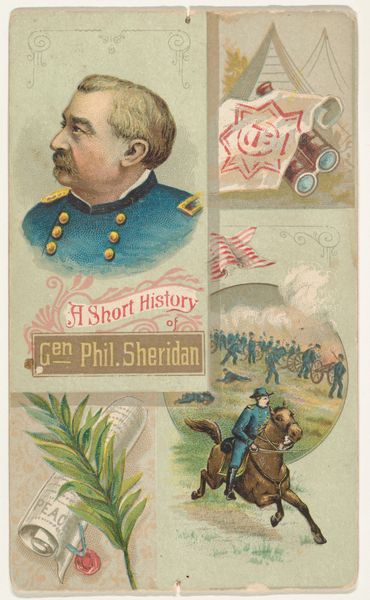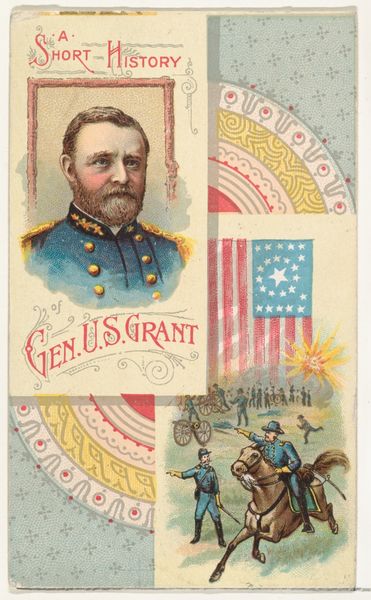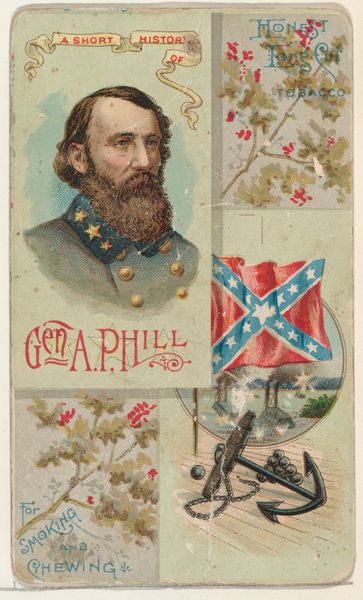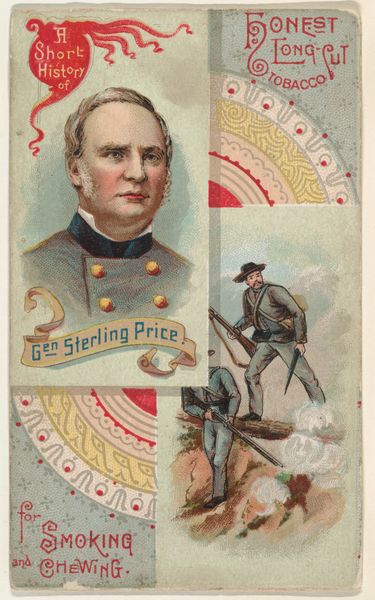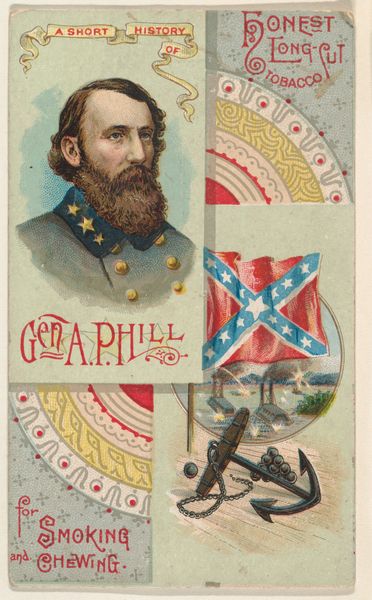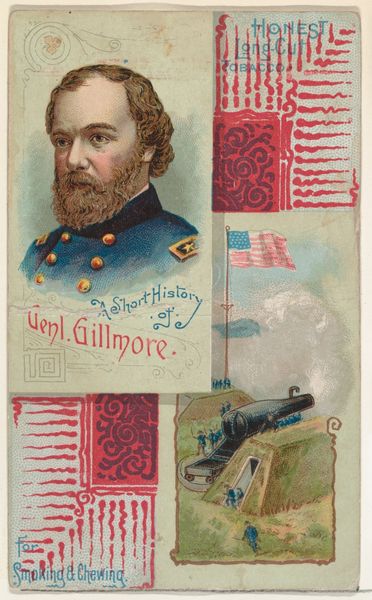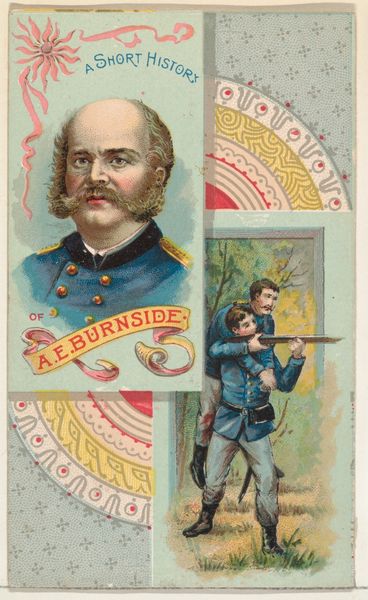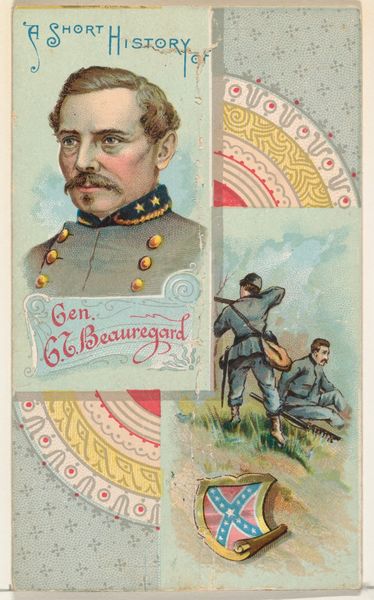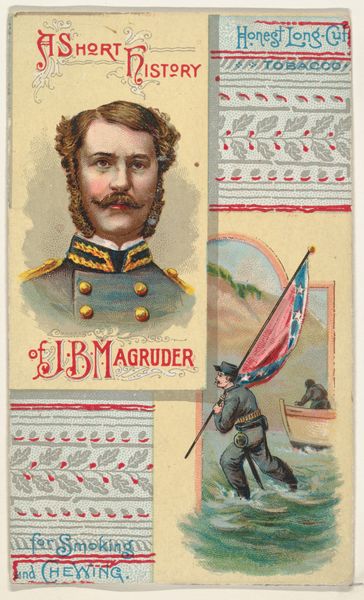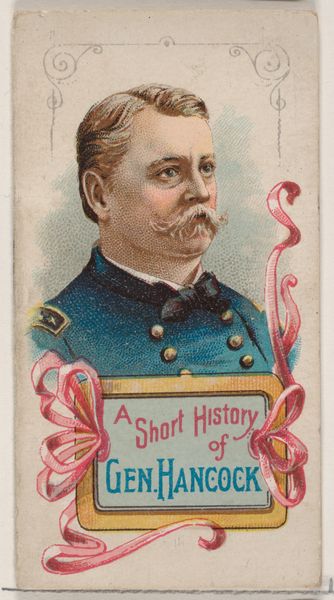
A Short History: General Philip H. Sheridan, from the Histories of Generals series (N114) issued by W. Duke, Sons & Co. to promote Honest Long Cut Smoking and Chewing Tobacco 1888
0:00
0:00
drawing, coloured-pencil, print
#
portrait
#
drawing
#
coloured-pencil
#
water colours
# print
#
coloured pencil
#
horse
#
men
#
genre-painting
#
history-painting
#
profile
Dimensions: Sheet: 4 3/16 × 2 1/2 in. (10.7 × 6.4 cm)
Copyright: Public Domain
Editor: This is "A Short History: General Philip H. Sheridan," a print from 1888 by W. Duke, Sons & Co. It seems like it was a promotional item for tobacco. I'm struck by how it uses images of war to sell a product for everyday consumption. What do you see in this piece? Curator: It's fascinating to consider this image as a commodity fetish. The process of transforming military heroism into a consumable image, printed on paper with colored pencils, erases the labor and violence inherent in war. The "Short History" becomes a superficial token tied to chewing tobacco, masking the complexities of historical events and the social impact of conflict. Editor: So, it’s almost like the war becomes a branding tool? Curator: Exactly. The means of production here—the printing process, the distribution network for the tobacco, the very act of consumption—all contribute to this transformation. Think about who is producing, consuming, and being represented here. Who had access to tobacco, and images of war? And conversely, whose stories are *not* told in this "short history"? What labor extracted which material and produced what kinds of meaning? Editor: I see. It's not just about glorifying the general; it's about the entire economic system that allows for this type of representation to exist. Does the method of printing cheapen it in any way? Curator: Precisely! The mass-produced print makes it accessible, seemingly democratic. However, this accessibility disguises the exploitation that fueled both the war depicted and the production of the tobacco product itself. It allows for an idealized view of history divorced from material realities. Editor: I hadn't thought about it that way. I was focused on the subject matter, but now I see the importance of the printing process and distribution network. Thank you! Curator: Considering the production of an artwork can fundamentally alter its narrative. Hopefully you'll start asking how material impacts the world and shapes society.
Comments
No comments
Be the first to comment and join the conversation on the ultimate creative platform.
